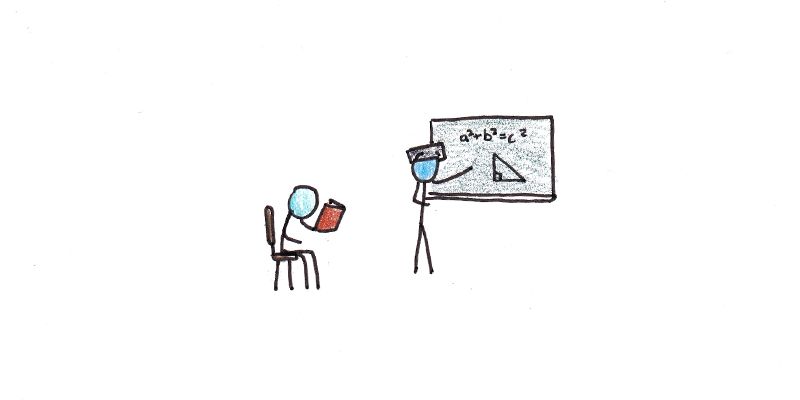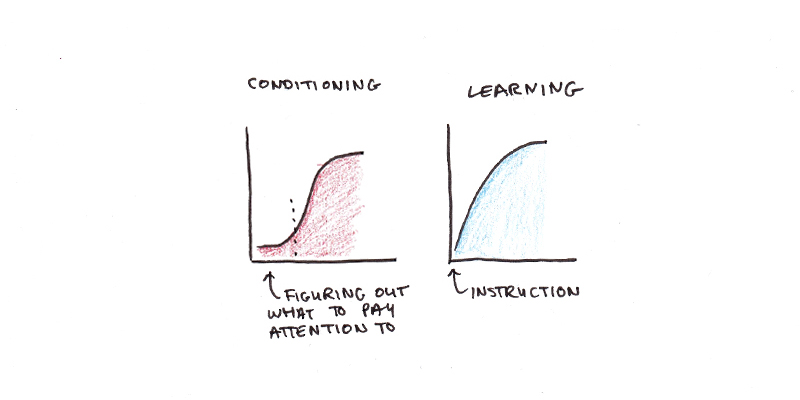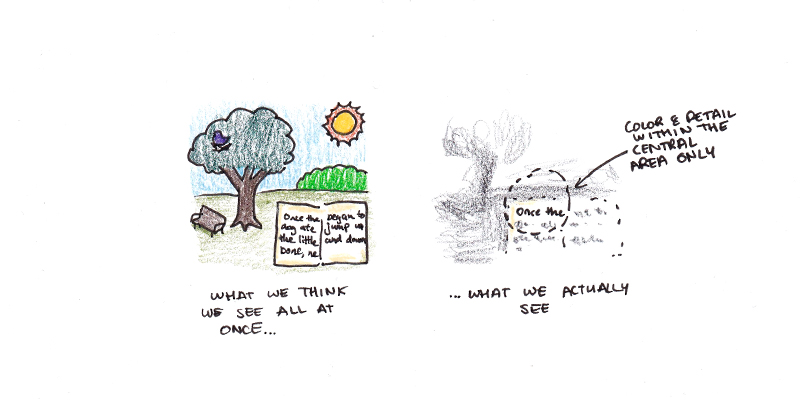In my quest to understand the nuts-and-bolts process of how we learn complex, valuable skills, I’ve read quite a few books on learning, teaching and skill acquisition.
This batch of books challenged my thinking and changed my mind on quite a few things. I read these books to further investigate learning by doing and the problem of transfer. Transfer of learning (when you learn one thing and apply it to something else) has been a notorious problem in education, something that piqued my interest when writing Ultralearning.
Below are seven books that influenced me the most.

1. The Power of Explicit Teaching and Direct Instruction by Greg Ashman
Ashman is a fierce critic of giving students complex, open-ended problems as a tool for learning. Instead, he argues, the material needs to be broken down into digestible chunks. Everything we want students to learn needs to be spelled out explicitly, much more explicitly than many teachers realize.
Ashman draws on two bodies of evidence to support his views. The first is the original research on Direct Instruction. These studies were among the most extensive educational experiments in history. They showed that Direct Instruction beat many alternatives that gave less guidance.
The second body of evidence Ashman draws on is from Cognitive Load Theory (CLT). CLT argues that working memory is limited, but patterns stored in long-term memory aren’t. Therefore, the goal of learning is to move patterns from working memory into long-term memory. Give too much information at once, and students fail to learn.
I quite enjoyed this book, even as it forced me to make serious revisions to my previous beliefs.
2. Theory of Instruction by Siegfried Engelmann and Douglas Carnine
After Ashman’s introduction, I decided to go to the source. Siegfried Engelmann and colleagues developed Direct Instruction in the 1960s with the specific aim of teaching disadvantaged students. Theory of Instruction is Engelmann’s magnum opus, fully articulating how the theory could potentially teach any skill.
How does it work? The basic idea of Direct Instruction is to reduce the material down to a minimal set of concepts, procedures, and actions and then to build those up into increasingly complex performances.
Describing the entire system is impossible in the few paragraphs I have here. But the central ideas in the system are:
- The aim of teaching is flawless communication. Instead of assuming failure lies with the student, assume the problem is one of communication. Most teaching is incomplete, and thus leads to gaps in understanding by students. While bright and knowledgeable students can easily fill those gaps, those who can’t are left behind.
- Students learn through examples. Both examples of a quality and similar non-examples are essential because otherwise you can’t know the full range of application of a new idea.
- Students can learn skills by breaking them down into parts.
- Short bursts of instruction need to be accompanied by immediate practice and feedback.
The advantage of Direct Instruction is that, given a well-tested curriculum, it can be a superior method for learning complex skills like reading or arithmetic. The disadvantage is that designing, executing and testing such a curriculum isn’t easy.
Many teachers’ hostility to Direct Instruction may be the same as craft autoworkers’ hostility to early assembly line plants. Once a craft executed only by skilled mechanics, modern cars are made using assembly-line production. By seeming to reduce the role of the teacher to following a lesson plan in lockstep, the craft elements that draw people to the profession might be lost.
3. Constructivist Education: Success or Failure? Edited by Sigmund Tobias and Thomas Duffy
Constructivists argue that the student must create knowledge for it to be meaningful. Explicit instruction advocates argue that discovery learning, championed by constructivists, is inefficient and wasteful. If something is important for students to know, why not just teach it to them directly?
This book was compiled in response to a 2006 paper by Sweller, Kirschner and Clark. Their article argued that constructivist approaches to education fail because they do not fit into what we know about how human memory works. Prominent researchers from both sides of the debate contributed essays sharing their perspectives, agreement and disagreement between the schools of thought.
The major conclusion I gathered from this book is that both sides agree that guidance is helpful for learning. However, explicit instruction advocates prefer giving students everything needed to solve a problem up front. Constructivists suggest that letting students come up with solutions themselves leads to deeper learning. This latter belief is intuitively appealing, but there is good evidence against it.
In the end, I felt like the advocates of explicit instruction had the upper hand in terms of evidence. While good constructivist education might be achievable by excellent teachers with bright students, Direct Instruction seems a more reasonable approach for wide-scale public education.
4. Learning and Memory by John Anderson
Anderson’s textbook, Learning and Memory, was fascinating as a discussion of experimental evidence for learning and its history within psychology. Anderson began in the behaviorist learning tradition and shifted into cognitive research on memory. Today, he’s most famous for his ambitious ACT-R theory, which attempts to provide a model for human cognition.
One tidbit I appreciated was his explanation of the difference between conditioning and learning curves. In a conditioning experiment, an animal is given rewards to shape behavior. But, given the non-human participants, no instructions are provided. In a learning experiment, a human is usually given explicit instructions, and their performance is monitored. Conditioning curves are s-shaped showing that they are slow to improve in the beginning, and learning curves shoot up immediately.

The difference seems to be that the animal has to “figure out” which aspects of its behavior are being rewarded in a conditioning experiment. In contrast, humans can be told where to pay attention so learning begins almost immediately. This subtle effect shows some of the influence of instruction on learning.
5. Ten Steps to Complex Learning by Jeroen van Merrienboer and Paul Kirschner
One major criticism of Direct Instruction is that stripping knowledge away from its useful context can make it difficult to understand the big picture. This is part of the constructivist critique of traditional schooling. While the solutions proposed have their flaws, the issues of meaningless learning are valid.
Ten Steps to Complex Learning is an attempt at a different solution to the same problem: how do you teach complex skills without overwhelming students?
The basic strategy outlined is to organize the curriculum based on real-world task categories. Tasks proceed from easiest to hardest. Within each category, instructors provide structured guidance that lessens over time until the student can perform the full range of tasks without problems.
The authors recommend students learn essential background knowledge ahead of time and that teachers give instructions alongside practice. The whole process is designed to minimize cognitive load during learning. Drills on procedural components are only used for a minority of fixed routines. In addition, students are given help with developing self-directed learning skills. The hope is that when students leave the program, they are equipped with tools to continue their training independently.
6. Learning and Instruction by Richard Mayer
I found this book’s discussion of the best way to teach basic skills such as reading, comprehension, and math, fascinating.
Mayer argues that children who struggle with aspects of a complex skill can improve with instruction and practice targeted on the components of the skill where they are weak. Examples include helping students recognize the sound components inside spoken words through rhyming exercises, decoding the sounds of written words through phonics training and helping students construct diagrams to assist with word problems in math. Skills are complicated, and a failure to learn is usually a breakdown of one of the essential components needed for performance.
7. The Mind is Flat by Nick Chater
Chater presents a radical view of the mind: The mind is what you’re currently experiencing. There are no hidden, unconscious depths, no beliefs and motives. Instead, he argues, we infer these things the same way we would the beliefs and motives of fictional characters—from the context cues surrounding them.
In this model, our minds are constantly engaged in a “grand illusion” that gives us the impression there is more going on than is really there. We imagine an entire visual scene presented before us, but in reality, we only have a tiny cone of detailed perception. The illusion of broader perception is sustained because we can flick our eyes and look at something as soon as we want to.

This grand illusion goes beyond visual perception. Chater argues our internal states, moods, and beliefs are assembled as we think about them. Mentality, then, is a constant process of inference, not just about the external world but about the details of our own lives.
On My Reading List
Some books I have lined up to read next include:
- How Learning Happens by Paul Kirschner and Carl Henrick
- Rules of the Mind by John Anderson
- Apprentice to Genius by Robert Kanigel
- Education and Mind in the Knowledge Age by Carl Bereiter
- Genius and the Mind Edited by Andrew Steptoe
As I read more, I’ll share my more interesting findings with you!


 I'm a Wall Street Journal bestselling author, podcast host, computer programmer and an avid reader. Since 2006, I've published weekly essays on this website to help people like you learn and think better. My work has been featured in The New York Times, BBC, TEDx, Pocket, Business Insider and more. I don't promise I have all the answers, just a place to start.
I'm a Wall Street Journal bestselling author, podcast host, computer programmer and an avid reader. Since 2006, I've published weekly essays on this website to help people like you learn and think better. My work has been featured in The New York Times, BBC, TEDx, Pocket, Business Insider and more. I don't promise I have all the answers, just a place to start.